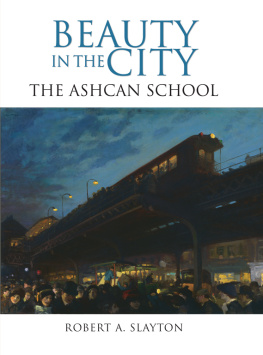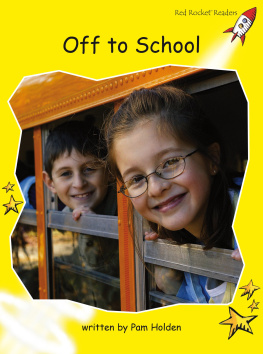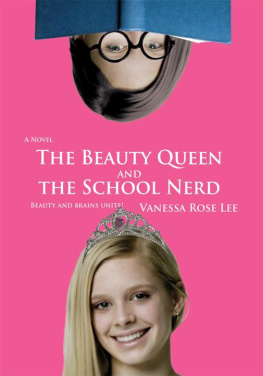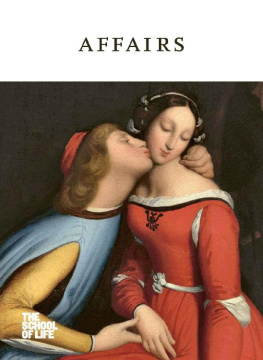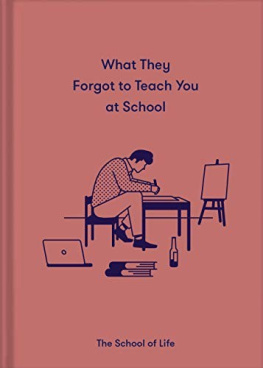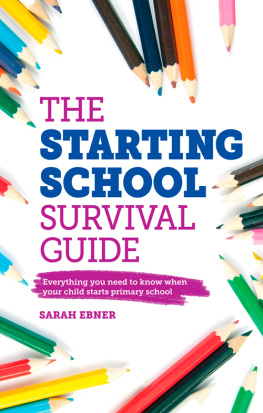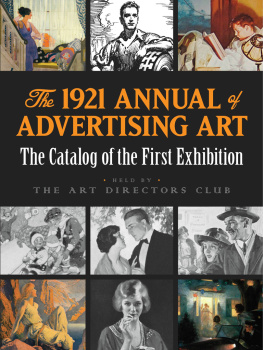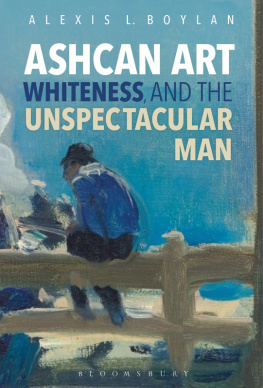Ashcan school - Beauty in the city: the Ashcan school
Here you can read online Ashcan school - Beauty in the city: the Ashcan school full text of the book (entire story) in english for free. Download pdf and epub, get meaning, cover and reviews about this ebook. City: New York;USA, year: 2017, publisher: State University of New York Press, genre: Art. Description of the work, (preface) as well as reviews are available. Best literature library LitArk.com created for fans of good reading and offers a wide selection of genres:
Romance novel
Science fiction
Adventure
Detective
Science
History
Home and family
Prose
Art
Politics
Computer
Non-fiction
Religion
Business
Children
Humor
Choose a favorite category and find really read worthwhile books. Enjoy immersion in the world of imagination, feel the emotions of the characters or learn something new for yourself, make an fascinating discovery.
- Book:Beauty in the city: the Ashcan school
- Author:
- Publisher:State University of New York Press
- Genre:
- Year:2017
- City:New York;USA
- Rating:4 / 5
- Favourites:Add to favourites
- Your mark:
- 80
- 1
- 2
- 3
- 4
- 5
Beauty in the city: the Ashcan school: summary, description and annotation
We offer to read an annotation, description, summary or preface (depends on what the author of the book "Beauty in the city: the Ashcan school" wrote himself). If you haven't found the necessary information about the book — write in the comments, we will try to find it.
Beauty in the city: the Ashcan school — read online for free the complete book (whole text) full work
Below is the text of the book, divided by pages. System saving the place of the last page read, allows you to conveniently read the book "Beauty in the city: the Ashcan school" online for free, without having to search again every time where you left off. Put a bookmark, and you can go to the page where you finished reading at any time.
Font size:
Interval:
Bookmark:

BEAUTY
IN THE CITY
THE ASHCAN SCHOOL
R OBERT A. S LAYTON

Cover art: Six Oclock, Winter, by John Sloan, 1912, oil on canvas, 26 32 in., acquired 1922, copyright Delaware Art Museum/Artists Rights Society, NY, The Phillips Collection, Washington, DC. Used by permission.
Published by
State University of New York Press, Albany
2017 State University of New York
All rights reserved
Printed in the United States of America
No part of this book may be used or reproduced in any manner whatsoever without written permission. No part of this book may be stored in a retrieval system or transmitted in any form or by any means including electronic, electrostatic, magnetic tape, mechanical, photocopying, recording, or otherwise without the prior permission in writing of the publisher.
Excelsior Editions is an imprint of State University of New York Press
For information, contact
State University of New York Press, Albany, NY
www.sunypress.edu
Production, Laurie D. Searl
Marketing, Fran Keneston
Library of Congress Cataloging-in-Publication Data
Names: Slayton, Robert A., author.
Title: Beauty in the city : the Ashcan school / Robert A. Slayton.
Description: Albany : State University of New York Press, 2017. | Series: Excelsior editions | Includes bibliographical references and index.
Identifiers: LCCN 2016045129 (print) | LCCN 2016047726 (ebook) | ISBN 9781438466415 (hardcover : alk. paper) | ISBN 9781438466439 (ebook)
Subjects: LCSH: Ashcan school of art. | Art and societyUnited StatesHistory19th century. | Art and societyUnited StatesHistory20th century. | City and town lifeUnited StatesHistory19th century. | City and town lifeUnited StatesHistory20th century.
Classification: LCC N6512.5.E4 S59 2017 (print) | LCC N6512.5.E4 (ebook) | DDC 701/.03dc23
LC record available at https://lccn.loc.gov/2016045129
10 9 8 7 6 5 4 3 2 1
To the people of New York City
For the generations past, those at present,
and iterations yet to come
C ONTENTS
I LLUSTRATIONS
| . |
A CKNOWLEDGMENTS
Daniele Struppa gave me more than gracious and emphatic support of this project, both of which he supplied in abundance. Because of his backing, despite the enormous scope of this project with its dozens of images, I was never worried about money. Thats the most incredible gift; not just for me, but to any scholar. It was, and is, truly a remarkable thing. More than a thank-you, he has my immense gratitude and respect.
Wilkinson College and Dean Patrick Fuery also provided funding in the form of a Scholarly Grant. The Henry Salvatori Professorship at Chapman University enabled me to travel to showings of Ashcan art, which in turn allowed me to realize the greater significance of what these artists had achieved. Jennifer Keene, chair of the History Department, also provided crucial assistance.
Two colleagues made a world of difference in this project. Steve Ross read the entire manuscript and stepped in at a critical moment to reshape and save this project. Dominic Pacyga also endured every page and was a source of boundless faith throughout. My gratitude to these two friends is deep and vast, beyond mere words.
I also benefited from comments by Rebecca Zurier, James Tottis, and Richard Meyer. Amanda Lanne-Camilli at State University of New York Press was a font of wisdom and, even more, of patience. Members of the Los Angeles Social History Study Group read chapters and provided insights. My thanks go to: Hal Barron, Nancy Fitch, Frank Stricker, and Leila Zenderland. Wendy Salmond was a godsend, helping me decipher the art world. Melissa Goldstein at Bridgeman Images became the best partner anyone could have when it came to obtaining permissions and pictures. Charlotte Mitchell at Sothebys obtained rights to a crucial artwork in private hands. Jonathan Spiro came through graciously with an important image. Special thanks go to Mrs. Barbara Palmer and Beverly Balger Sutley at the Palmer Museum of Art for their gracious support.
It was no easy task to manage a project of this size. My appreciation knows no bounds when it comes to Stacy Laird, administrator extraordinaire. This volume required over a hundred permissions and payments at an endless and changing list of institutions. It takes someone with remarkable abilities to handle a project like that, to keep track of it all and maintain order. Someone far, far better than me. Stacy Laird did it perfectly, never missing a beat, with grace and humor to boot. If this volume makes sense, if I am still (relatively) sane, you and I can thank Stacy Laird for that gift. Maci Reed also assisted with this formidable task. At Chapman Universitys Leatherby Libraries I thank, above all, Rand Boyd, archivist and friend. He never faltered, regardless of the magnitude or obscurity of the queries I sent his way. Kevin Ross and Carolyn Radcliff provided funding for crucial documents. Maria Yanez in the ILL Office did yeomans work finding sources.
Two final citations are deeply personal. In the middle of this project I contracted transverse myelitis, a rare neurological disease, which paralyzed my left side. For a year I was at home performing administrative duties, learning about my new body, and, even more, my new life. Each and every week during that long sojourn, fellow Chapman historian Leland Estes picked up the books I had marked for Xeroxing and brought back the previous weeks work; dropped off class papers for me to comment on, so I could remain active; and kept me up to date on news and gossip. I thanked him profusely, and all he ever replied was, Bob, youd do the same for me. He defines two words: friend and mensch.
And always there was Rita. Who just makes life worthwhile, as she has done for me for decades. I am still madly in love with her.
CHAPTER ONE
A ND L IKE T HAT T HEY RE G ONE
T HE A SHCAN ARTISTS DREW A PART OF THE CITY NOT PREVIOUSLY THE SUBJECT OF GREAT ART , capturing the laundry lines, the crowded quarters, the smokestacks, and yes, the ashcans of the urban working class.
Befitting an analysis of such iconoclastic work, this study also takes a different approach. This is not a work of art history; there will be no attempt to analyze the aesthetics of the Ashcan painters, the brushstrokes they employed to tell their stories. Rather, this is explicitly a work of historynot art historyand should be understood within that discipline.
Instead, the vantage point will be that of a social historian; it is content that concerns us here. What did the Ashcan artists contribute to our understanding of the city during its boom era in American history? And what do these answers tell us about the development of American society when it was being transformed by the great forces of urbanization and industrialization? The answers to these powerful questions lie in the study of artists of ashcans.
Ashcan artists recognized that the city was the most exciting place to be in America at the start of a new century; their art has since lasted because that vision remains true amid the current vibrancy of places like New York City. By depicting the immense power and the allure of the metropolis, these artists captured an eternal truth. They created paintings of glorious yet gritty moments in time, construction sites and ferry boats, tenement apartments and newsboys and working women and men. They also bestowed on these urban players a respect that other artists had overlooked.
Font size:
Interval:
Bookmark:
Similar books «Beauty in the city: the Ashcan school»
Look at similar books to Beauty in the city: the Ashcan school. We have selected literature similar in name and meaning in the hope of providing readers with more options to find new, interesting, not yet read works.
Discussion, reviews of the book Beauty in the city: the Ashcan school and just readers' own opinions. Leave your comments, write what you think about the work, its meaning or the main characters. Specify what exactly you liked and what you didn't like, and why you think so.

